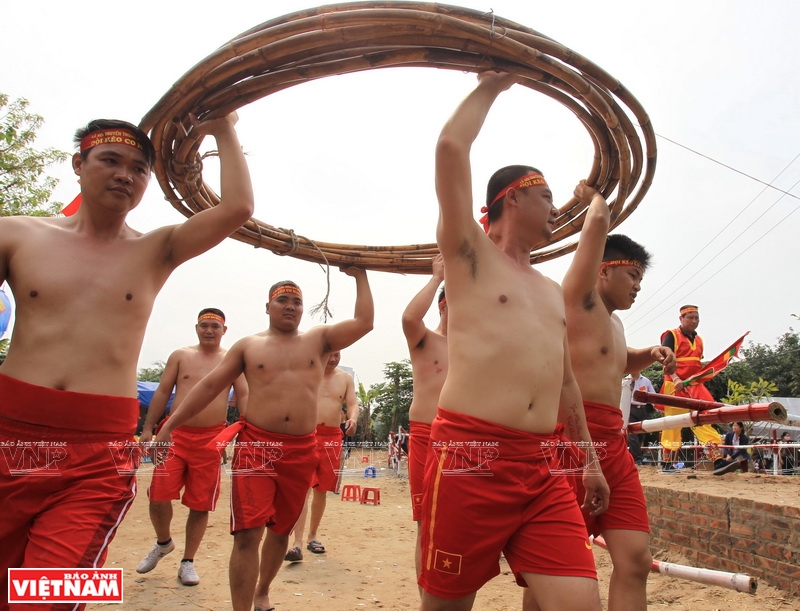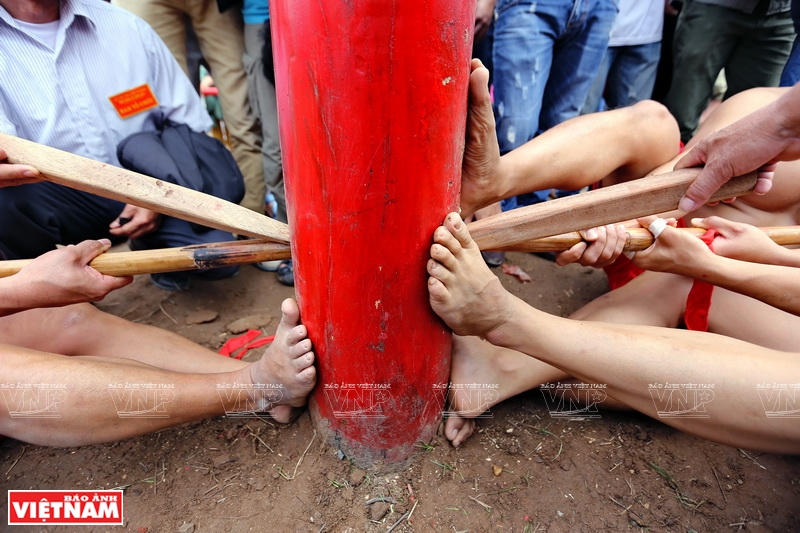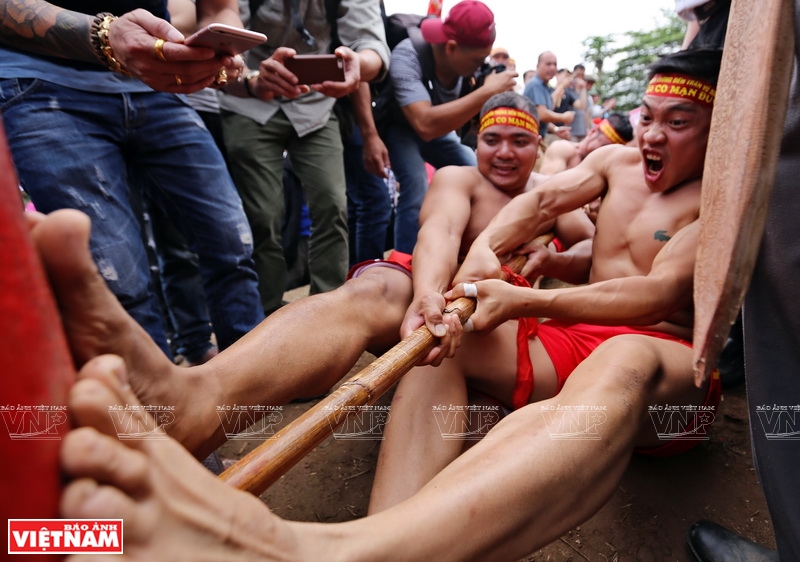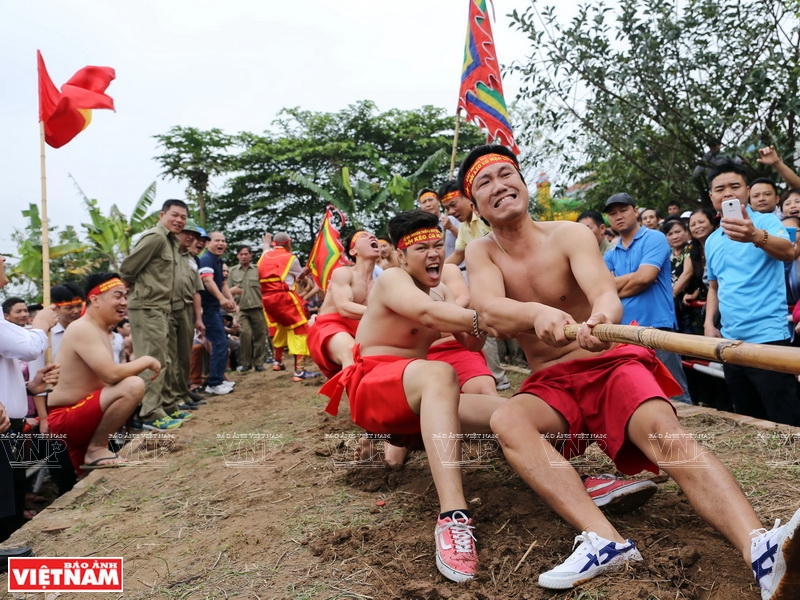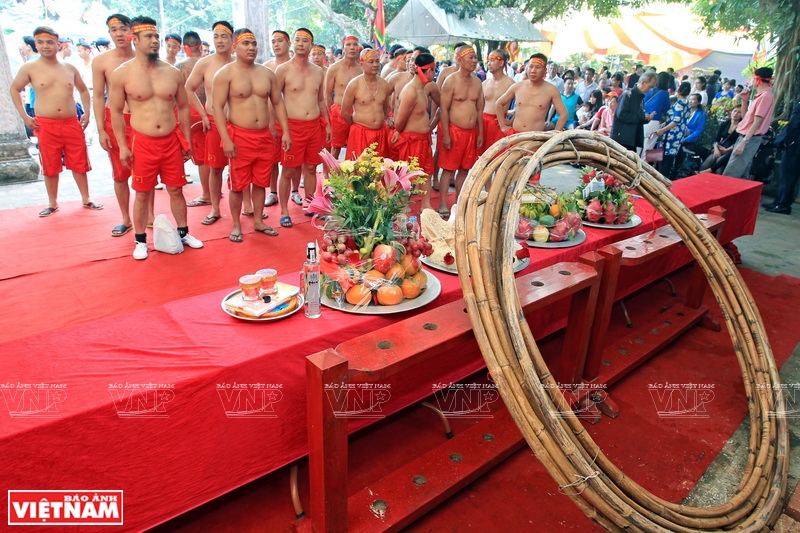 An offering ceremony is held at Tran Vu temple before the players start the competition.
|
The competing teams are selected before the festival. People from families that have had at least five generations living in the village are eligible to play. Ngoc Tri village has three hamlets: Duong, Dia and Cho. Each hamlet sends its team to compete and also to give offerings to local gods at Tran Vu temple before entering the competition. Each team has up to 24 men and a captain. The two teams pull a rattan rope which is put through the hole of a wooden pole set firmly in the ground. The game is for fun and the competitors do not concern themselves much about the final results. Both winners and losers are happy and have a feast after the game.
| On December 2, 2015, the UNESCO’s the Intergovernmental Committee for the Safeguarding of Intangible Cultural Heritage inscribed the tugging rituals and games of Vietnam, Cambodia, the Philippines and the Republic of Korea on the Representative List of the Intangible Cultural Heritage of Humanity. |
The game is interesting in that while the players might be from any hamlets in the village, but they all want the team from Duong hamlet, where people make a living by growing crops, to win. If this team wins, it is believed that the whole village will enjoy a year of prosperity and happiness.
Sit down tug of war has been played for generations in Ngoc Tri, Thach Ban commune, Long Bien district. The folk game, like other traditional customs and practices, not only promotes the local culture but helps build unity in the community.


